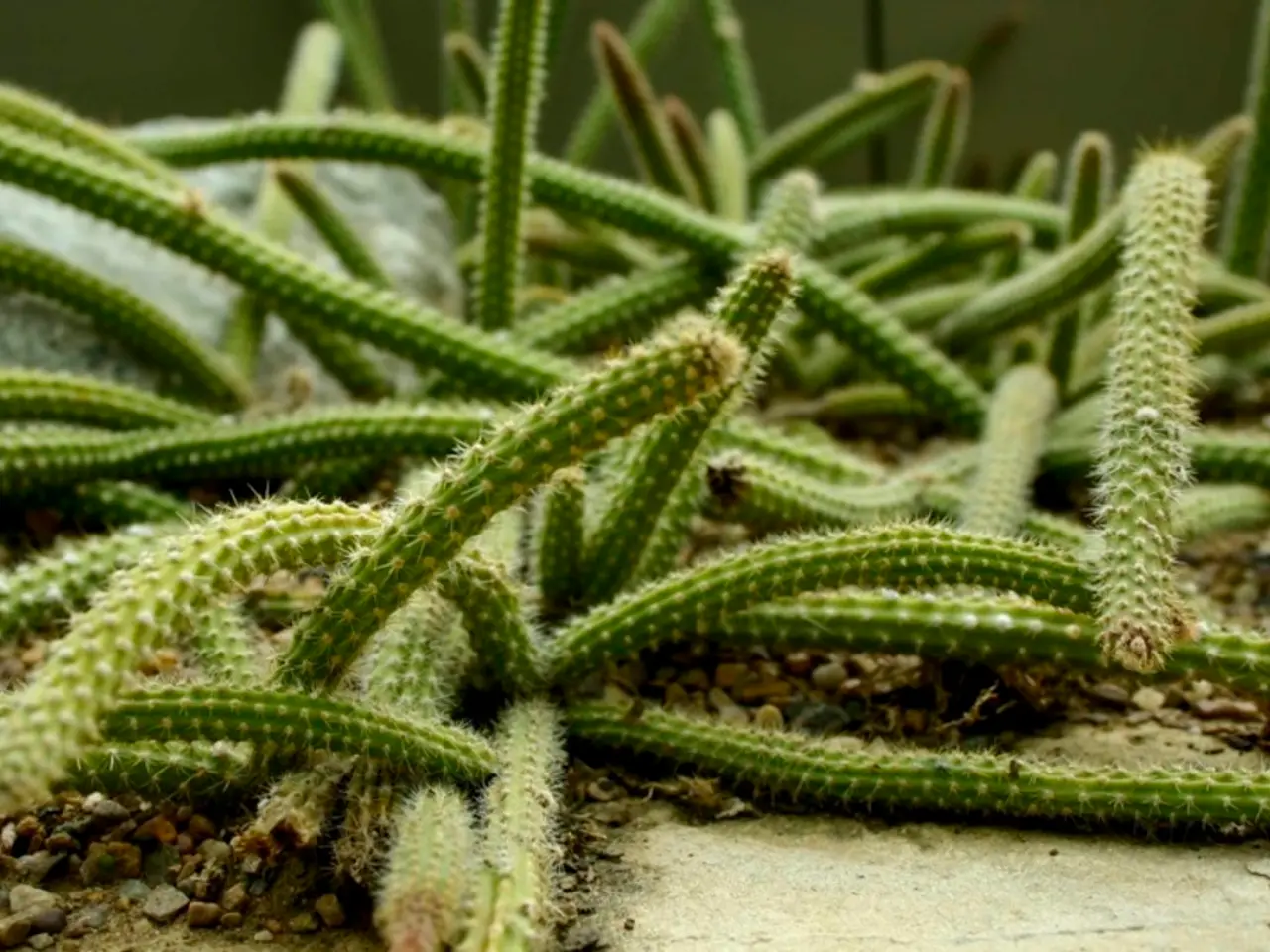Cultivating Thanksgiving Cacti: Tips for Nurturing Vibrant Plants That Flower During Holiday Season
The Thanksgiving Cactus, scientifically known as Schlumbergeratruncata, is a popular houseplant known for its vibrant fuchsia-like blooms that brighten up homes during the colder months. Here's a comprehensive guide on how to care for your Thanksgiving Cactus, ensuring it thrives and blooms beautifully.
**Light Requirements:**
Provide your Thanksgiving Cactus with 4 to 6 hours of diffused or bright indirect light daily, especially during blooming periods in winter. Avoid direct, harsh sunlight, particularly in spring and summer, as too much sun can cause pale or yellowing leaves.
**Temperature Range:**
Maintain temperatures between 70°F to 80°F (21°C to 27°C) during the growing season. These plants prefer a stable, warm environment.
**Watering:**
Water by allowing the soil to dry out almost completely between waterings. Overwatering leads to root rot, so ensure the pot drains well and avoid letting the plant sit in water.
**Fertilizing:**
Use a balanced water-soluble fertilizer at half strength in spring and early summer, coinciding with the active growth period. Avoid fertilizing during dormant periods (fall and winter).
**Repotting:**
Repot only when necessary, typically when the plant outgrows its pot or the soil becomes compacted. Use a pot with drainage holes to prevent water accumulation.
**Soil:**
Use a well-draining potting mix, such as a general-purpose potting soil combined with perlite or a sandy cactus mix. This prevents water retention that can cause root rot.
**Pruning:**
Pruning is essential for maintaining a healthy Thanksgiving Cactus. Prune immediately after blooming or during the new growth phase (late winter to late spring) to encourage branching and fuller growth.
**Propagating:**
Propagation is commonly done by taking healthy stem cuttings and allowing them to callous before planting in moist, well-drained soil. Rooting occurs relatively easily if conditions are right.
**Common Problems:**
Watch out for overwatering causing root rot and pale, yellowing leaves from too much direct sunlight. Also, monitor for pests like mealybugs, although they are less common, and remove dead or damaged parts promptly.
**Special Considerations:**
Thanksgiving Cacti have higher magnesium needs than most plants. For the cactus to rebloom, it requires a period of short days, experiencing 12-14 hours of uninterrupted darkness each night. Fertilize once a month using a houseplant feed diluted to half strength. In the fall, switch to a low-nitrogen food to promote flowering.
Heights of Thanksgiving Cacti range from 6-24 inches (15-60cm), and the flowers last for two to four months. The cactus thrives in bright but indirect sunlight, ideally close to an east or north-facing window. In the warmer summer months, the cactus can tolerate temperatures of 70-80°F (21-27°C).
To promote Thanksgiving Cactus blooms, maintain it at a daytime temperature of 61-68°F (16-20°C) during the fall, and 55-60°F (13-15°C) at night. Begin fertilizing Thanksgiving cactus plants once they start to develop new growth in late winter or early spring and continue until the end of summer. It's a good idea to occasionally apply Epsom salts - diluted one teaspoon per gallon of water.
When propagating Thanksgiving cactus, snip off a stem with 2-5 sections and leaves, dust the end with fungicide, and allow it to callus for a week in a dry location.
With these care instructions, your Thanksgiving Cactus will thrive, providing you with beautiful fuchsia-like blooms for months to come.
Gardening enthusiasts should consider the Thanksgiving Cactus, with its vibrant fuchsia-like blooms, as an excellent addition to their home-and-garden collection, serving as a delightful charm for any lifestyle during the colder months. Ensure it receives 4 to 6 hours of diffused or bright indirect light daily, and maintain temperatures between 70°F to 80°F (21°C to 27°C) during the growing season to encourage blooming and overall health.




